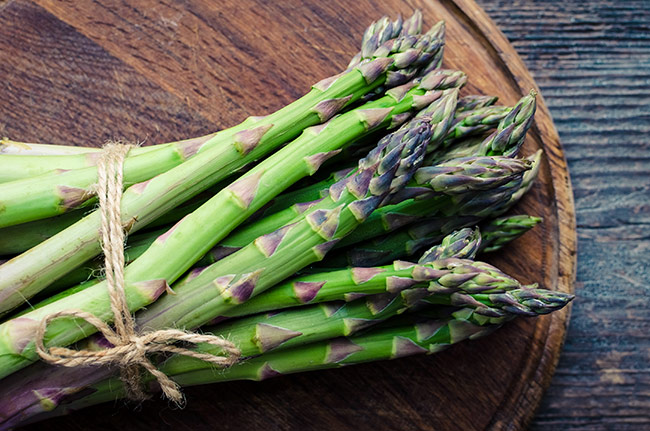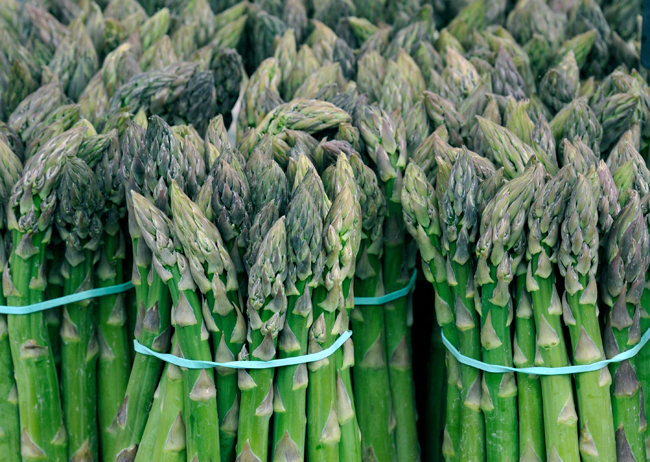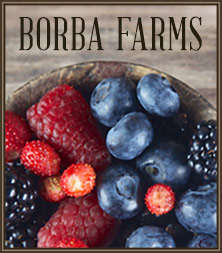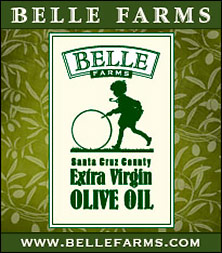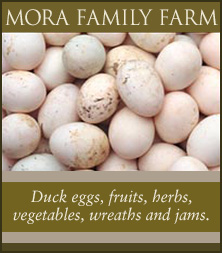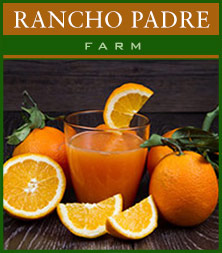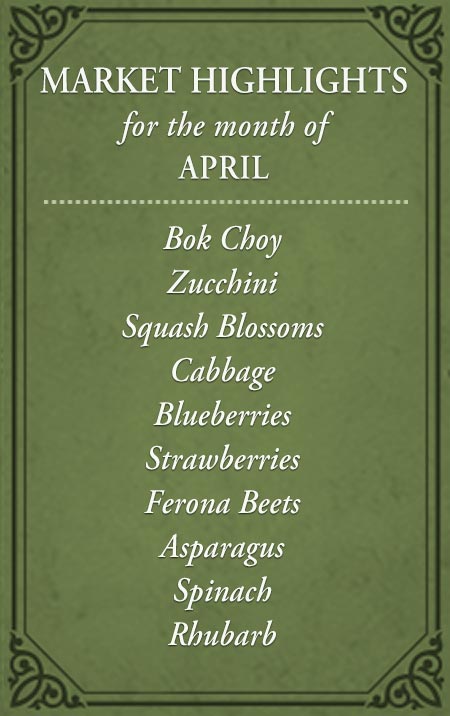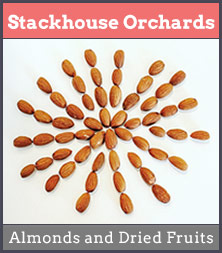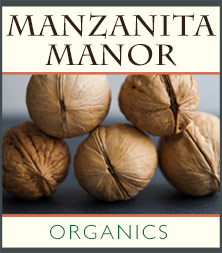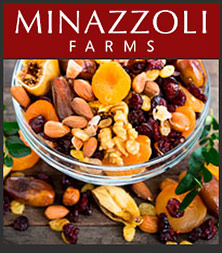Without a doubt, asparagus is one of the harbingers of spring at the farmers’ markets. And these nutritious spears can be cooked in numerous ways — grilled, roasted, steamed, or sauteed. Add them to pasta or salads, or enjoy them as an appetizer.
When selecting asparagus, check the bottom of the bunch to see that the cuts are fresh and wet looking, not dried out and shriveling. The tops should look fresh and not decayed or falling apart, and of course, the stalks themselves should look full and smooth.
Thick or Thin Spears?
You will hear some folks say they think the thicker spears are older and less tender, or prone to be tough, but after a conversation with Fred Minazzoli (who brings asparagus, among other things, to market) I found out the truth. For the first three years, all the spears from an asparagus plant will be thin. After that, the same plant may produce both thick and thin spears. After a lot of taste trials, I can say that the thicker ones tend to be more succulent, and can be cooked in many ways. The thinner spears tend to want a moist cooking method to keep them tender.
Basic Steaming Method
When preparing asparagus, simply snap the stalk and it will break where the skin turns tender. When the spears are thick, peel them by laying them flat on a board and using a sharp swivel peeler to remove the tougher skin. Cut off the bottom part where it is tough.
For cooking pencil thin to “normal” size (~3/8 inch) spears, snap them and lay them in a 10-inch sauté pan. Add enough cold water to come just below the top of the spears, and put a tight-fitting lid on the pan. Put the pan over high heat and bring the water to a boil. Once the water is at a full boil, pour out the water, re-cover the pan, and allow the asparagus to steam for three minutes. The asparagus are perfect at this point for serving hot.
If you are going to use them in a cold preparation, submerge the spears in an ice bath after 2 1/2 minutes of cooking. If you are going to add the asparagus to another dish such as risotto or pasta, blanch the asparagus briefly, for about 1 1/2 minutes, then cool or use them immediately in the dish. It’s best to cut the asparagus to the size required for the dish before cooking, as it is much easier to cut raw asparagus. If the asparagus is cooked and soft, you risk mashing the spears.
Basic Roast Method
The fat spears are my favorite and are delicious roasted. Peel the bottom of the spears, and then you can decide to leave them whole or cut them on the bias into 2-inch pieces. Either way, drizzle spears or pieces with high-quality olive oil to coat them entirely with the oil.
Then, place the asparagus on a heavy sheet pan and spread the asparagus out so there is room between the pieces. If they are too close, they will steam and just get sort of mushy, rather than roast. Sprinkle with some salt and fresh pepper and roast in a preheated 400°F oven for about 15 minutes, or until the asparagus are tender and starting to crisp and caramelize on the outside edges.
A Few More Ideas
I also like to add orange juice to the oil and allow the asparagus some time to marinate before roasting. Another favorite trick of mine is to oil the asparagus, then drizzle them with a shot of white truffle oil. Then, as the asparagus come out of the oven, I add a few more drops of the truffle oil while still really hot, and the smell that comes up is amazing.
For recipes, see March Highlight: Asparagus.


